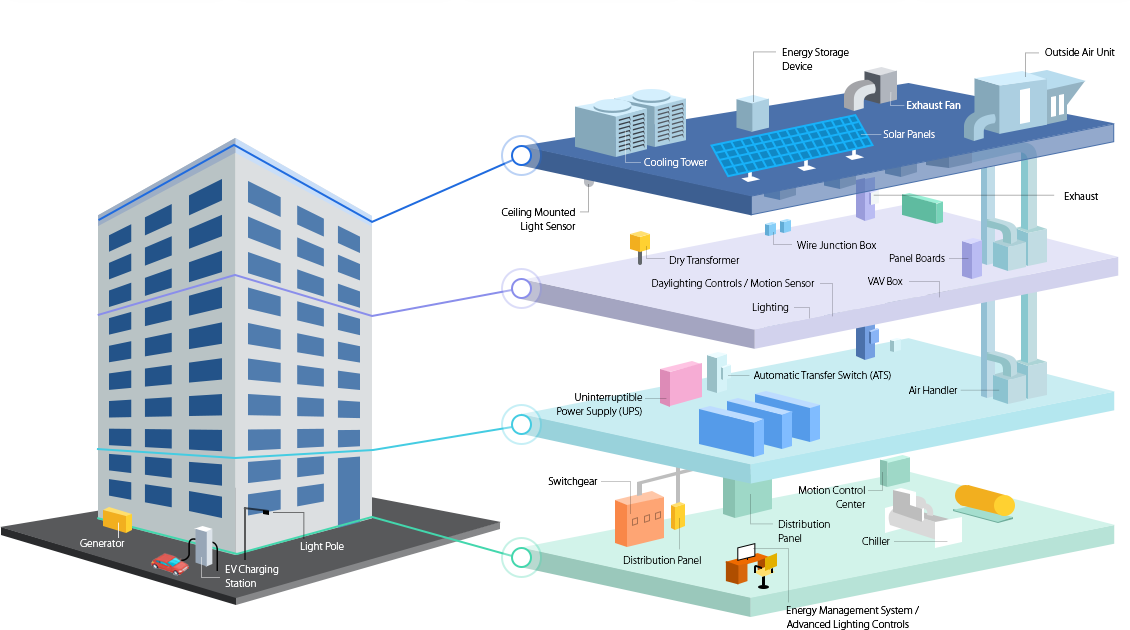BEE Energy Saving Tips for Domestic Users

In today’s world, where energy consumption is rising and environmental concerns are more pressing than ever, it’s essential to adopt energy-saving practices in our daily lives. From lighting and air conditioning to kitchen appliances and computers, every small step we take can contribute to significant energy savings, reduced utility bills, and a lower carbon footprint. This guide offers practical tips and strategies to help you make your home or office more energy-efficient, ensuring that you do your part in conserving resources while enjoying the benefits of modern conveniences.
Lighting System
01. One of the best energy-saving devices is the light switch. Turn off lights when not required.
02. Many automatic devices can help in saving energy used in lighting. Consider employing infrared sensors, motion sensors, automatic timers, dimmers, and solar cells wherever applicable, to switch on/off lighting circuits.
03. As for possible use of task lighting, which focuses light where it’s needed. A reading lamp, for example, lights only reading material rather than the whole room.
04. Dirty tube lights and bulbs reflect less light and can absorb 50 percent of the light; dust your tube lights and lamps regularly.
05. Fluorescent tube lights and CFLs convert electricity to visible light up to 5 times more efficiently than ordinary bulbs and thus save about 70% of electricity for the same lighting levels.
06. Ninety percent of the energy consumed by an ordinary bulb (incandescent lamp) is given off as heat rather than visible light.
07. Replace your electricity-guzzling ordinary bulbs (incandescent lamps) with more efficient types. Compact fluorescent lamps (CFLs) use up to 75 percent less electricity than incandescent lamps.
08.A 15-watt compact fluorescent bulb produces the same amount of light as a 60-watt incandescent bulb.
Room Air Conditioners
01. Use a ceiling or table fan as the first line of defense against summer heat. Ceiling fans, for instance, cost about 30 paise an hour to operate – much less than air conditioners (Rs.10.00 per hour).
02. You can reduce air-conditioning energy use by as much as 40 percent by shading your home’s windows and walls. Plant trees and shrubs to keep the day’s hottest sun off your house.
03. One will use 3 to 5 percent less energy for each degree the air conditioner is set above22°C (71.5°F), so set the thermostat of the room air conditioner at 25°C (77°F) to provide the most comfort at the least cost.
04. Using ceiling or room fans allows you to set the thermostat higher because the air movement will cool the room.
05. A good air conditioner will cool and dehumidify a room in about 30 minutes, so use a timer and leave the unit off for some time.
06. Keep doors to air-conditioned rooms closed as often as possible.
07. Clean the air-conditioner filter every month. A dirty air filter reduces airflow and may damage the unit. Clean filters enable the unit to cool down quickly and use less energy.
08. If the room air conditioner is older and needs repair, it’s likely to be very inefficient. It may work out cheaper on life cycle cost to buy a new energy-efficient air conditioner.
Refrigerators
01. Make sure that the refrigerator is kept away from all sources of heat, including direct sunlight, radiators, and appliances such as the oven, and cooking range. When it’s dark, place a lit flashlight inside the refrigerator and close the door. If light around the door is seen, the seals need to be replaced.
02. Refrigerator motors and compressors generate heat, so allow enough space for continuous airflow around the refrigerator. If the heat can’t escape, the refrigerator’s cooling system will work harder and use more energy.
03. A full refrigerator is a fine thing, but be sure to allow adequate air circulation inside.
04. Think about what you need before opening the refrigerator door. You’ll reduce the amount of time the door remains open.
05. Allow hot and warm foods to cool and cover them well before putting them in the refrigerator. Refrigerators will use less energy and condensation will reduce.
06. Make sure that the refrigerator’s rubber door seals are clean and tight. They should hold a slip of paper snugly. If paper slips out easily, replace the door seals.
07. When dust builds up on the refrigerator’s condenser coils, the motor works harder and uses more electricity. Clean the coils regularly to make sure that air can circulate freely.
08. For manual defrost refrigerators, the accumulation of ice reduces the cooling power by acting as unwanted insulation. Defrost the freezer compartment regularly for a manual defrost refrigerator.
Water Heater
01. To help reduce heat loss, always insulate hot water pipes, especially where they run through unheated areas. Never insulate plastic pipes.
02. By reducing the temperature setting of the water heater from 60 degrees to 50 degrees C, one could save over 18 percent of the energy used at the higher setting.
Microwave Ovens &Electric Kettles
01. Microwaves save energy by reducing cooking times. In fact, one can save up to 50 percent on cooking energy costs by using a microwave oven instead of a regular oven, especially for small quantities of food.
02. Remember, microwaves cook food from the outside edge toward the center of the dish, so if you’re cooking more than one item, place larger and thicker items on the outside.
03. Use an electric kettle to heat water. It’s more energy efficient than using an electric cooktop element.
04. When buying a new electric kettle, choose one that has an automatic shut-off button and a heat-resistant handle.
05. It takes more energy to heat a dirty kettle. Regularly clean your electric kettle by combining boiling water and vinegar to remove mineral deposits.
06. Don’t overfill the kettle for just one drink. Heat only the amount of water you need.
Computers
01. Turn off your home office equipment when not in use. A computer that runs 24 hours a day, for instance, uses – more power than an energy-efficient refrigerator.
02. If your computer must be left on, turn off the monitor; this device alone uses more than half the system’s energy.
03. Setting computers, monitors, and copiers to use sleep mode when not in use helps cut energy costs by approximately 40%.
04. Battery chargers, such as those for laptops, cell phones, and digital cameras, draw power whenever they are plugged in and are very inefficient. Pull the plug and save.
05. Screen savers save computer screens, not energy. Start-ups and shutdowns do not use any extra energy, nor are they hard on your computer components. In fact, shutting computers down when you are finished using them actually reduces system wear – and saves energy
Conclusion
Implementing energy-saving measures in your home or workplace not only benefits the environment but also leads to considerable savings on your energy bills. By making simple adjustments like using energy-efficient lighting, properly maintaining appliances, and optimizing the use of heating and cooling systems, you can significantly reduce your energy consumption. These practices not only help in cutting costs but also contribute to a more sustainable and eco-friendlier lifestyle. Embrace these tips and encourage others to do the same, as collective action is key to creating a greener future for all.

